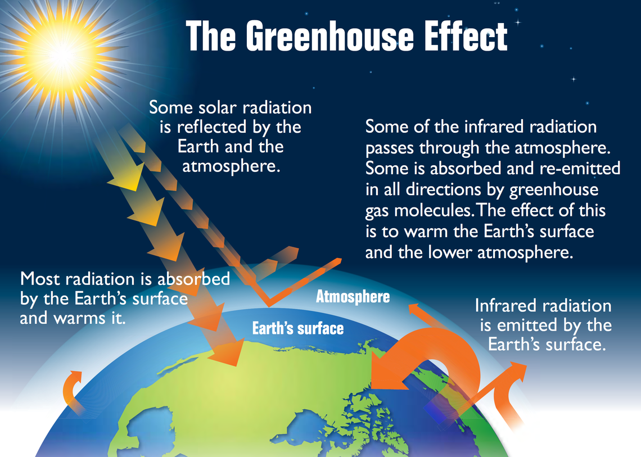1.1 Climate Change
Physical principles of climate change
All life on earth depends on radiation from the sun. When solar radiation reaches the earth's surface, one fraction of the incoming radiation is directly reflected. However, the greater part of the radiation is absorbed by the earth's surface and later re-emitted in the form of long-wave thermal radiation. If the earth had no atmosphere, this long-wave heat radiation would be completely emitted into space and the earth’s surface temperature would not exceed -18 °C.
Thankfully, the earth does have an atmosphere: some of its contained gases, the so-called greenhouse gases (GHG), absorb parts of the outgoing long-wave radiation emitted from the earth’s surface. When the radiation absorbed by greenhouse gases such as water vapour, carbon dioxide and methane is set free again, it is either emitted into space or else returned to the earth’s surface. As a result of the back radiation from greenhouse gases, the earth's surface is additionally heated. Thus, the temperature at the earth is raised by 33 °C to an average temperature of 15 °C.
